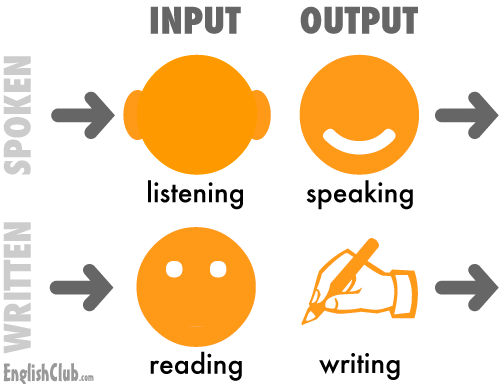B-SLIM is a planning model for second language teaching in classroom settings. Dr. Olenka Bilash, a professor at University of Alberta, has presented a cycle of planning, teaching and evaluating for teachers to consider in a language education program. BSLIM consists of five parts of understanding instructions for a lesson.
As we have seen in several of the case studies, many teachers are unaware of how to provide their students with the structure and support they need in order to be successful in their learning. Structure and support go hand in hand and are therefore referred to simultaneously. These terms refer to what the teacher must consider for the learners to successfully complete the task.
Credit: http://www2.education.ualberta.ca/staff/olenka.bilash/Best%20of%20Bilash/home1.html
 Planning and preparation
Planning and preparation is the first element of B-SLIM. This stage shows not only HOW and WHAT TO prepare but also perspectives of understanding language learners.
The "Giving it " stage begins when the teacher enters the classroom. It consists of ways to make what is taught (vocabulary, structure, culture. . . ) comprehensible . In this stage, this model shows how to put into practice research from cognitive psychology, such as Miller´s magical Number of 7 +/- 2, Gardner´s Multiple Intelligences, cognitive capacity and cognitive load and others.
As a stage of practice to be able to use the target language, "Intake" comes after
"Giving it" "Intake" has two categories of types of activities. If the activity requires less high level thinking in learners´ mind, it is called
"Getting it" activity, for example repetitions, mimic and drills.
The other type of activities is called "Using it" activity. It triggers a higher level of thinking, in other words creativity of language use. |
The next part of B-slim is named "Proving it". In this stage, the activity becomes more authentic and the learners show spontaneous language use in a meaningful context or a project. |
Although found at the end of the continuum "Assessing it" means that teachers assess both the progress of the learners and the effect of their instruction throughout every class. Assessing student interest, progress and competency makes it possible to adjust and improve the instruction that will take place later, so B-slim becomes a cycle of instruction of a language. Assessing it appears not only at the end of a set of a language course but also during the four stages that have been shown above.
Why use B-SLIM?
If you know B-SLIM, you will be able to clearly see what you need to do in the next lesson. The stages of B-SLIM, help to provide most of the things that language teachers should know and think about, so you will be sure to start an action to move on to the next stage. Think about the names of the parts of BSLIM just like the names of railway stations.
If you understand the elements of the parts, you can clearly explain, "why you teach like that" to your co-workers, your students, their parents and yourselves. It is just like introducing your town to tourists on the street.
|
Example for B-Slim teaching bslimForPresent.flvSample of B Slim Lesson Plan Unit : Shopping Topic : Clothes
Unit: Health Topic: How to keep fit m.4
Unit : Weather Topic : Climate P.6
Unit: Tourism Topic: Travel Arrangement M.5
Unit4: Free TimeTopic: Sports P.4
Unit 1: Myself Topic : Sport M.4











